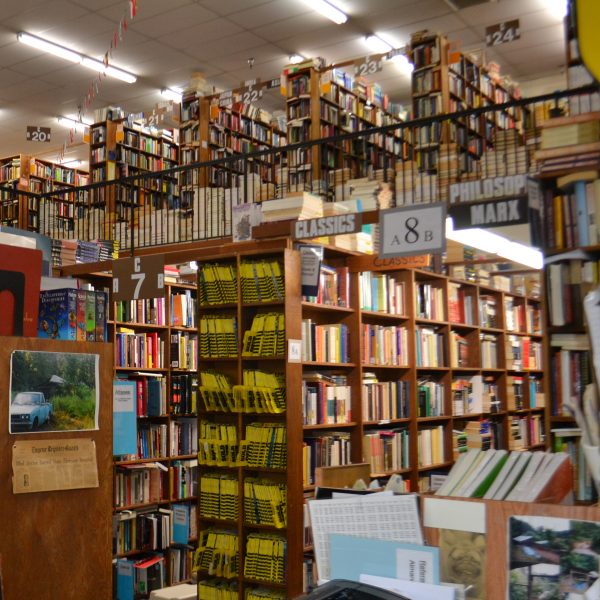
It’s clear the jewelry industry—and in particular the number of independent jewelers—is shrinking. But that’s true of retail overall. And, until recently, it was true of independent bookstores.
If you compare today versus decades ago, the number of brick-and-mortar booksellers has fallen. But the independent segment has reversed that trajectory. In 2009, the American Booksellers Association counted 1,401 member companies and 1,651 member locations. Now it claims 1,757 member companies and 2,321 member locations. The number has risen for the last eight years.
How has the industry escaped the downward spiral? The group’s CEO, Oren Teicher, had the following thoughts:
– Bookstores take advantage of the buy local movement.
“The localism movement has been huge for us,” he says. “We aggressively encourage our members to promote themselves as locally owned, to say loudly and proudly they are a local business. A local independent business takes for granted that everybody knows they are locally owned. But not everybody knows that. The fact is, millions of Americans do like to shop at independent stores. They value that diversity. They don’t want everything to be cookie cutter. They know that the dollars spend locally recirculate in the community as opposed to dollars spent online.”
– They often join forces with other local shops.
“We encourage retailers to reach out to one another. If consumers come to an indie bookstore, chances are they will go to the indie retailer down the street.”
– They take maximum advantage of technology.
While the online world has hurt brick-and-mortar retail, Teicher says technology should also be viewed as a friend.
“Independent booksellers can use a lot of the same technology that our big corporate competitors do, whether it’s inventory or payroll. That can make your business operate more efficiently. So the cost of the back end has come way down. And of course you can use technology to communicate with your customer. It’s a lot less expensive to reach customers in 2017 than it was 20 years ago.”
– The industry supported independents.
“The industry figured out they needed brick-and-mortar stores to survive. When consumers come into a store, they discover things. That is different than just buying a book online. So they worked with bookstores on creating a viable economic model so that channel doesn’t disappear. There’s been a huge recognition by suppliers that this is a two-way street and that their profitability is connected to our long-term viability.”
– Bookstores increasingly offer in-store events.
“They are offering classes, complimentary brunches, foreign-language classes, pottery making: It’s whatever you need to do to make sure that the bookstore is a place that you want to hang out.”
– There is a renewed focus on the in-store experience.
In language jewelers will be quite familiar with, Teicher says bookstores are now focused on “creating an experience instead of just selling a commodity.
“A few years ago, I spoke with the hardware dealers association. They said, ‘We don’t sell nails. We sell information about nails.’ So we don’t sell books. We sell information about books. If you know exactly what you want to buy, you can buy it wherever. But a lot of consumers aren’t sure. The ability to go into a knowledgeable retailer has always been a big differentiator in the marketplace. It’s what our stores pride themselves on. We hope that no one will walk out of one of our member stores and feel the staff isn’t knowledgeable about books.”
One undeniable advantage booksellers have over jewelers is online no longer has a sales tax advantage. Amazon, the leading book retailer, now charges sales tax in all 50 states. The leading jewelry e-tailer, Blue Nile, only charges sales tax in three.
But overall, bookstores renewed themselves by being open to reinvention.
“The store has to be more than a physical place, where you put up shelves, and hope the customer comes,” Teicher says. “Today you have to be engaged in creating an experience; you have to be engaged in the community. It’s being on the radio, being on TV, giving talks. It takes a lot of time and effort. You have to work harder than ever to give consumers a reason to come and buy from you.
“The overarching secret has been a continual reinvention of and understanding of our retailers. Obviously, it’s tough out there. The world is changing, consumer tastes and behavior are changing. Retailers who think they can open their door and do the same thing in 2017 that they did in 2012 are kidding themselves. You have to keep changing and evolving.”
(Image from Wikipedia)
Follow JCK on Instagram: @jckmagazineFollow JCK on Twitter: @jckmagazine
Follow JCK on Facebook: @jckmagazine